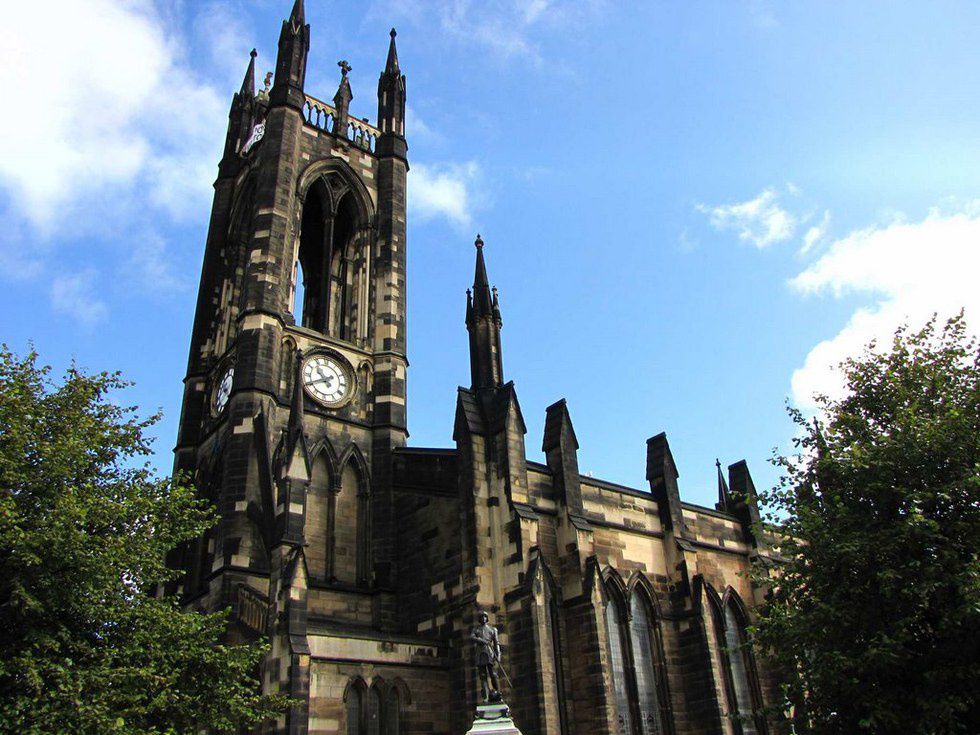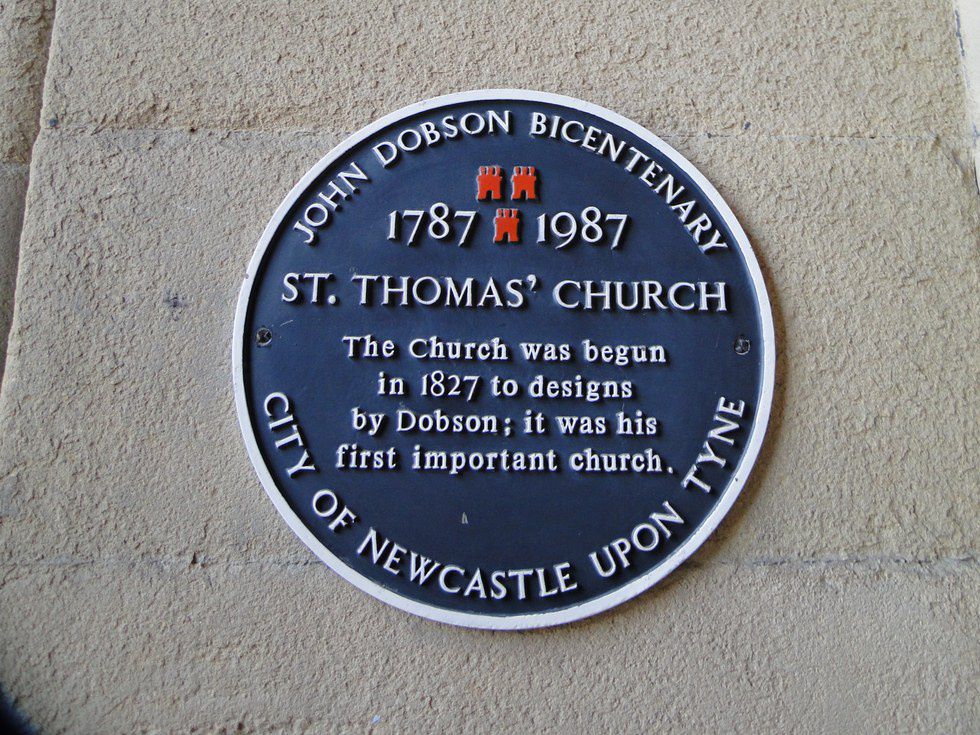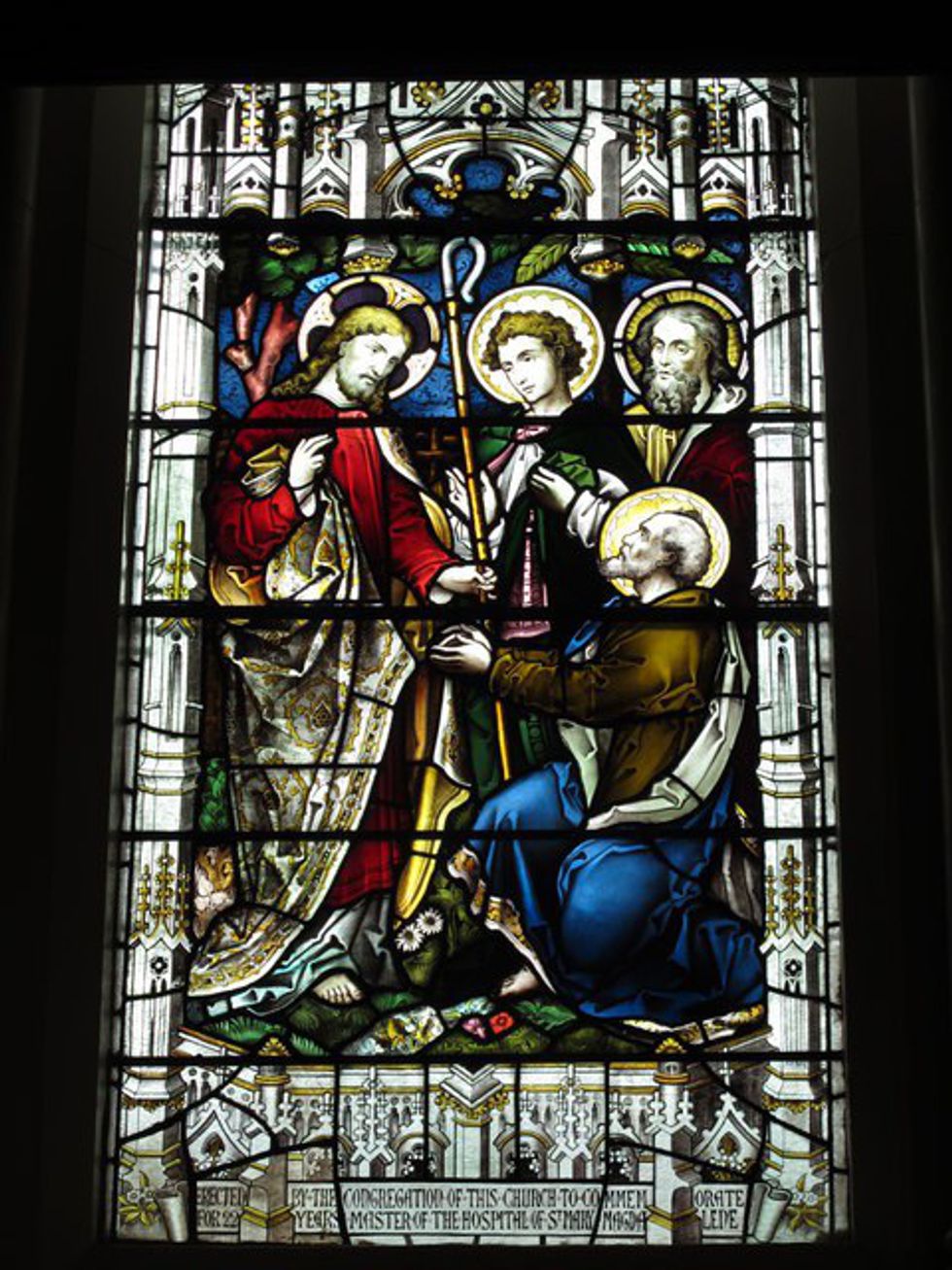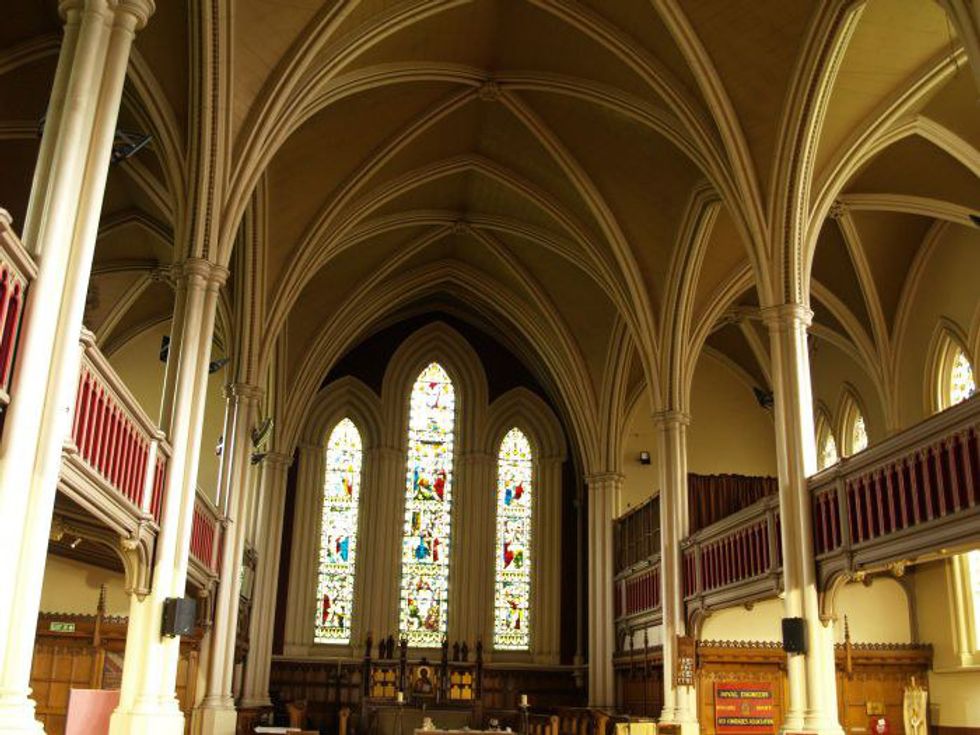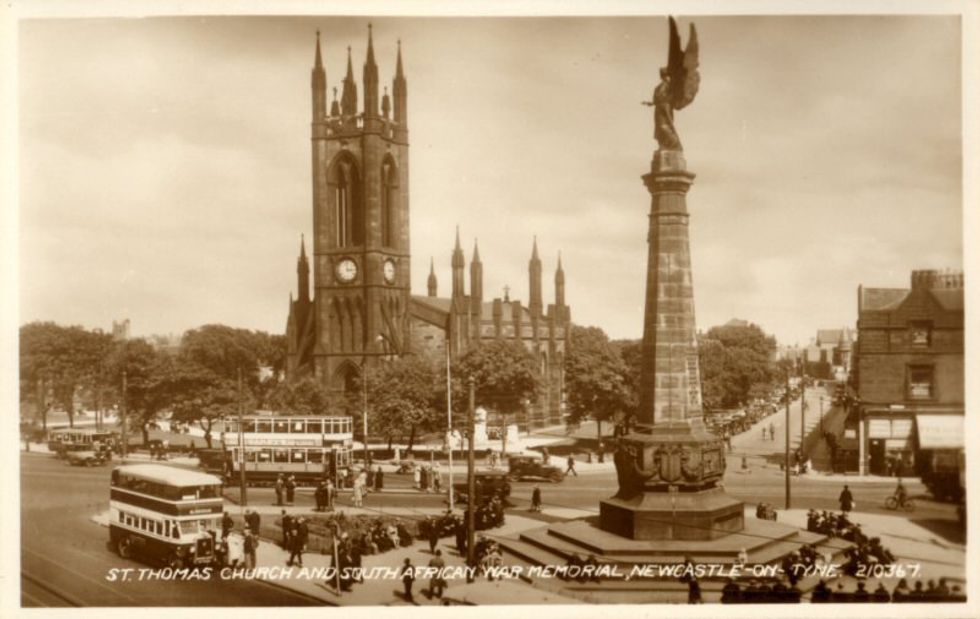I am a firm believer that travel is the most effective and most rewarding form of education, and experiences such as this one are proof of my theory. When history, culture and humanity come together, great things happen.
While exploring the city of Newcastle, England, this past week, I stumbled upon a historic-looking cathedral in my path and decided to investigate. The outside was worn down from years of exposure to the elements and the architecture spoke of a time long before my own, so I was eager to enter the church and immerse myself in its past.
Stepping inside, I was surprised to find the space serving as a functional and modern place of worship. Not in the sense of holding a service, like most historical cathedrals do every so often, but because it was home to a community. There was still the original furniture, stained glass windows and facilities as during its origin, but the atmosphere felt anything but ancient. Several people were bustling about with boxes, papers and donation cases, and there was some sort of an exhibit with poster board displays off to one side. A closet near the entrance was stacked full of day care supplies and Sunday school decorations, and the space was anything but quiet.
Intrigued by the uniqueness and activity, and still curious as to the building’s background, I quietly crept inside and read what wall placards I could find. The church wasn’t anywhere near as old as I expected it to be, having only been established in 1787, young for England. Not much was said about its historical significance, maybe because it lacked any at all. Having assumed that it probably was just another pretty cathedral that served as nothing more than an everyday church back in the 18th century, I decided to head out and continue my exploration of the city.
However, as I went to leave, I passed by a rack of pamphlets set out by the church, and a title caught my eye. Pausing to see if I had read it right, I looked closer at the brochure’s description and was surprised to see that I was indeed correct in what I had seen:
“Free HIV Testing.”
Maybe it was my upbringing in the deep south, or maybe I’ve encountered inaccurate representations of Christianity, but I personally don’t associate churches with a lot of diversity or lack of judgment. HIV is seen (incorrectly) as a disease acquired from both promiscuity and homosexuality, two things that the Christian faith has been historical against. But here this piece of paper sat, advertising a service that I never would have thought to see offered.
I looked around at other nearby pamphlets on the stand and came across a broad variety of similar services, such as advice on living with HIV / AIDS and help with struggles ranging from alcoholism, drug addiction and mental illness to debt, taxes and hunger.
Fascinated by my findings, I made my way over to the poster demonstration and discovered that they were providing opportunities for the members of the church to help members of their community in need, including helping to solve the issues that the previous brochures were offering help for. Where a brochure might be telling of an opportunity to receive extra blankets and sweaters, the posters told of places where the clergy could donate warm clothing to those in need. Even though the recipients of the generosity did not have to be part of the church to receive the assistance, it was incredible to see that the community looked out for one another.
But the best part was that these people did good for the sake of doing good, not for the sake of their particular religion. Displayed right alongside the advertisements for a canned food drive at the church were ads to house homeless LGBT youth in the area or for opportunities to provide a meal to a Third World refugee passing through town. Just like it should be, but unlike how it so often is, nothing about the person mattered except for the fact that they were in need and, therefore, deserved to be helped.
Running out of time and not wanting to disrupt the working members of the church any further, I took a look at a final few leaflets and then headed back to the exit. One of the women leading the organization of the displays came over as I reached the door, offered me her thanks for visiting with them and apologized for not welcoming me more because they were so caught up in their work. She then asked if I had any questions about the church before I left, and although I had entered curious about the history, I was now far more interested in the present.
I inquired as to what denomination of Christianity the church was, and was taken off guard to learn that it was a chapter of the Church of England, not what I had expected at all. The woman made sure to clarify after telling me this that, although they were officially a branch of that faith, they prided themselves on being an open space for anyone looking for a place of worship or simply a place to go. At this point, her answer shouldn’t have surprised me given all that I had seen, but it still made me smile to hear such a genuinely kind answer. Her pride in her faith’s acceptance of diversity was clear in the way that she talked about the space and even more prominent in her informing me that she herself was the church’s vicar.
I thanked her for the warm welcome and for all the help, and as I opened the door to go, marveling at the place I had discovered, the woman called out to me one last time.
“Oh, I almost forgot! A quick bit of history that I think says a lot about us. This church was built on the grounds of an old leper hospital. Have a wonderful day!”
In what world does so much kindness, from the past, the present and hopes for the future, come together all under one roof? Especially in the name of religion? But that was the point, it wasn’t about religion. Religion may have been what brought them all together in the first place, but it is human nature and a desire to help out those in need that inspires them to do good. The fact that they take care of people with radically different belief systems and lifestyles, including some that their personal religious doctrine contradicts, is proof of this. They make no attempts at conversion, put religion and controversy aside, and do the right thing as human beings.
This church, its leaders, its members and its community should be an inspiration to all of us. Empathy and compassion are absolutes and no detail about another person is a reason to stop practicing these traits. Because at the core of every faith, every philosophy and every person, there should be love.




